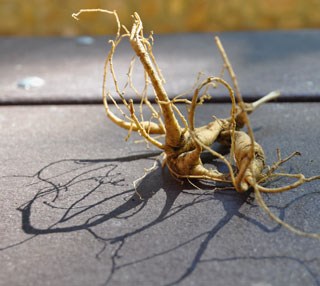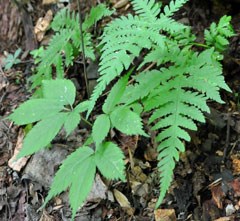|
Plants > Replanting poached ginseng 
NPS photo. There are many signs that fall is here: dried leaves scuttle across roads and oaks sag under the weight of acorns. But fall brings more than these natural changes: this is also the season when arrests for ginseng poaching jump, and when botanists and volunteers are busy replanting the seized roots. American ginseng is a native plant in the Smoky Mountains. These wild roots are also a highly prized tonic, especially in Asian markets. Dried ginseng roots are used in medicines, teas, and other health products. It’s legal to harvest ginseng outside the park on private lands or with a permit in certain Forest Service areas. But it is illegal to harvest ginseng inside the park. 
NPS photo. Park scientists realized these slow-growing native plants could disappear because harvesting means taking the entire ginseng root, and many, many people were harvesting. Ginseng harvest in the park has always been illegal. Each year law enforcement rangers seize between 500 and 1000 illegally poached ginseng roots, and then the race is on to return them to their home turf. This year, law enforcement rangers seized a near-record number of roots--over 800--as a result of long-term surveillance in the park. The park had help preparing the roots to be replanted from a team of diligent volunteers. Over several weeks the volunteers aged and weighed 650 of the roots that seemed likely to survive, entered data in a long-term monitoring database, marked the roots, and finally replanted them in the watershed from which they‘d been poached. 
NPS photo. Over the years park biologists have marked and replanted most of the 13,000 roots that law enforcement seized. Monitoring shows that today many of these roots have survived and are again thriving in these mountains. Go to page 2: From poached to replanted with volunteer help to see how volunteers were involved in the whole process. |
Last updated: April 14, 2015
